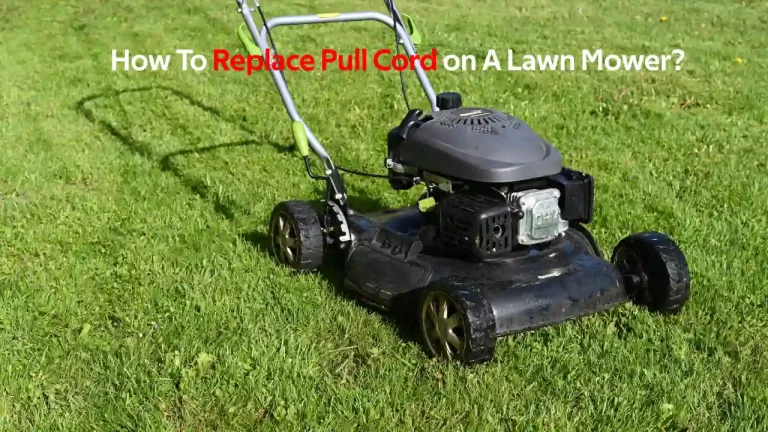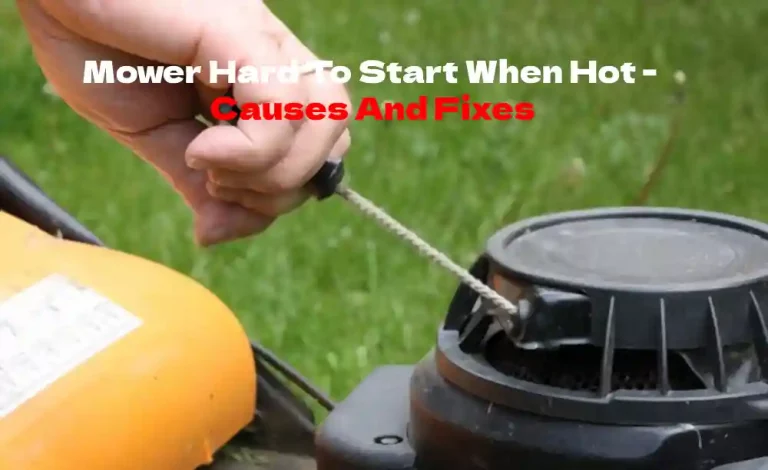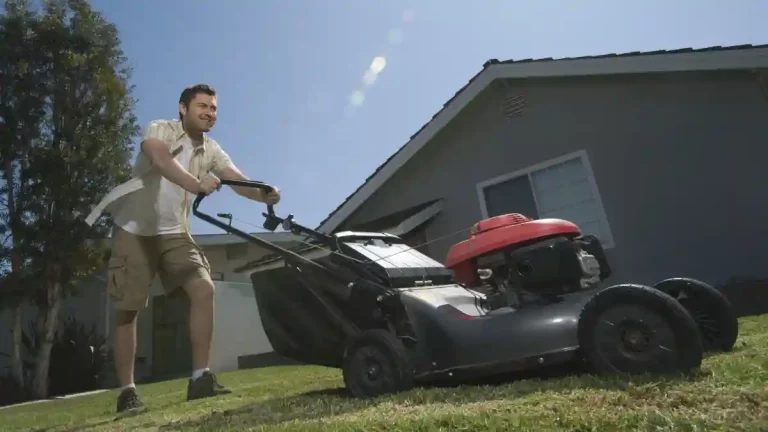Very little is more frustrating than a gas-powered lawnmower that does not work in an advertised way. The problems are often caused by using the lawnmower in a way that was not intended or through a lack of maintenance.
You can turn a two-stroke lawnmower onto any side you choose as long as gas does not spill out of the tank. Four-stroke lawnmower engines are more sensitive and should only be tilted with the handles pulled down to the ground or on the side with the air filter and carburetor facing up.
There are several opinions as to which way you tilt a lawnmower. The confusion has often caused operators to describe two-stroke and four-stroke lawnmowers as the same. Four-stroke lawnmowers need to be turned only in a certain way.
The Way You Tilt A Lawnmower Depends On The Type Of Engine
If you have a 2-stroke lawnmower where you mix the oil directly into the petrol tank, it doesn’t matter which way you tilt it.
If you use a lawnmower with a four-stroke engine, you must only tilt the lawnmower one of two ways.
- Backward towards the handles
- If you need better access to the underside, you only tip it to the side on which the exhaust is positioned, which will be the side opposite the carburetor and air filter.
Why Is It Important To Tilt The Lawnmower The Correct Way?
If your lawnmower has a two-stroke engine and you turn off the gas cap so the fuel doesn’t spill from the tank, you can tilt it whichever way you want.
If a four-stroke engine powers your lawnmower, you need to be cautious about which side you tilt it to.
Several problems may result if a lawnmower is tilted on the wrong side.
- Oil may enter the air filter via the breathing tube.
- Gas may leak out.
- Gas may enter the filter.
- Gas may leak into the carburetor, causing it to flood.
- Gas may leak into the gas cap breather, which restricts the venting of the fuel system.
- Oil may leak into the piston chamber, contaminating the spark plug.
Remember that lawnmowers don’t have gas pumps, and the fuel is drawn into the engine first by gravity, and once started, this is supplemented by suction.
Turning the lawnmower on its side may be the best position to increase the effect of gravity and speed the outpouring of the fuel.
Whichever lawnmower you use, it’s always good to turn off the gas tap or clamp the gas pipe with pliers to ensure that excess fuel doesn’t spill.
Oil May Enter The Air Filter
If oil spills into the air filter box, the air filter will be contaminated, which will prevent sufficient air from being mixed with fuel, and the lawnmower will flood and not be able to be started.
Obtain a new air filter and replace the compromised part if this happens.
Gas May Leak Out
Apart from the fire risk, you should prevent the gas from leaking.
- It’s a waste of gas that is skyrocketing in cost.
- The gas will stain the lawn (if you tilt it in the garden) or cause a mess in your garage.
Gas May Enter The Air Filter
A soaked air filter will stop the correct volume of air from entering the carburetor, which may cause the engine to
- Run rough.
- Start then stop.
- Blow black smoke.
- Not run at all.
If gas enters and contaminates the air filter, mainly if it is made from pleated paper, it will need to be replaced.
Trying to let the air filter dry out won’t fix the problem.
Gas May Leak Into The Carburettor, Causing It To Flood
The design of most four-stroke lawnmowers has a crankcase vent that routes to the air filter box.
Fuel will pour through the crankcase vent and into the carburetor’s throat if the lawnmower is tilted to the wrong side.
Because four-stroke mower engines have a float-type carburetor that will leak fuel if tipped in
the wrong way.
Fuel will enter the piston chamber directly and contaminate the air filter if the intake valve is open.
It will result in the lawnmower engine being flooded.
When too much fuel enters the piston chamber, hydro lock develops in extreme cases. In this situation, the starter cord cant will feel stuck, and the engine will act if it is seized.
The solution is to remove the spark plug and see if the engine will turn over.
Gas May Leak Into Gas Cap Breather
Tilting the lawnmower on the wrong side can cause gas to flow into the tank caps venting hole, which causes a partial vacuum within the tank.
It can cause the engine not to start or to only run for a few minutes, then quit.
Oil Leaks To The Piston Chamber Contaminating The Spark Plug
If the lawnmower is tilted, the wrong way oil may enter the piston chamber from the crankcase.
If too much oil enters the chamber, the spark plug will become contaminated, and it will be necessary to remove the oil and clean the spark plug before continuing.
The best way to remove excess oil in the piston chamber is to remove the spark plug.
- Leave the lawnmower for a few hours; the oil should seep back into the crankcase.
- Pull the starter cord until the piston is a Top Dead Centre (TOD) and wipe the piston through the spark plug hole.
- Suck out the excess oil with a turkey baster.
- Actively pull the starter cord to push out the excess oil.
- Try to start the lawnmower. If it starts, the excess oil will burn off.
Reasons Why You May Need To Tilt The Lawnmower
Two situations may require you to tilt a lawnmower.
- To keep the engine running if it begins to stall.
- Remove debris caught in the blade or work on the cutting edge itself.
Treat each of these circumstances differently.
To Keep The Engine Running If It Begins To Stall
If you are mowing the lawn and hit a patch of thick lawn, and the lawnmower engine starts to struggle, the best way to keep it running is to tilt the handle down, which lifts the blade off the ground, and in turn, removes the resistance which allows the engine revs to pick up again.
Remove Debris Caught In The Blade
There are two symptoms that the blade has caught something.
- A cacophony of hammering noises comes from under the lawnmower
- The lawnmower stalls won’t turn over when you pull the starter cord.
There is probably some debris trapped between the blade and chassis that need to be removed in each instance.
In this situation, you should follow the steps listed below.
- Switch off the lawnmower.
- Turn off the gas tap.
- Remove the spark plug.
- Turn the lawnmower on the side where the oil dipstick is installed.
- Remove the debris.
- Check that the lawnmower blades rotate freely
- Attach the spark plug.
- Turn on the fuel tap and restart the lawnmower.
If your lawnmower does not have a separate dipstick, Tip the lawnmower onto the side with the crankcase/oil cap, exhaust on the downward side, and the carburetor and air filter on the upside of the mower.
If the lawnmower has been running before turning it on its side, take care where you turn it on its side.
Hot exhausts can burn a mark on grass or damage a painted garage floor.
Conclusion
Turning a lawnmower on its side does not severely damage the engine. Still, it is inconvenient having to remedy the potentially contaminated air filter or fuel and oil, which may have gone into the wrong place.
Ensure the lawnmower is tilted with the oil dipstick/crankcase/oil cap and exhaust on the downward side and the carburetor and air filter on the upside of the mower. In that case, you will eliminate the frustrations caused by tilting the wrong way.
References
https://gardening.stackexchange.com/questions/24960/which-way-to-put-lawnmower-on-side
https://www.wikihow.com/Maintain-a-Lawn-Mower







